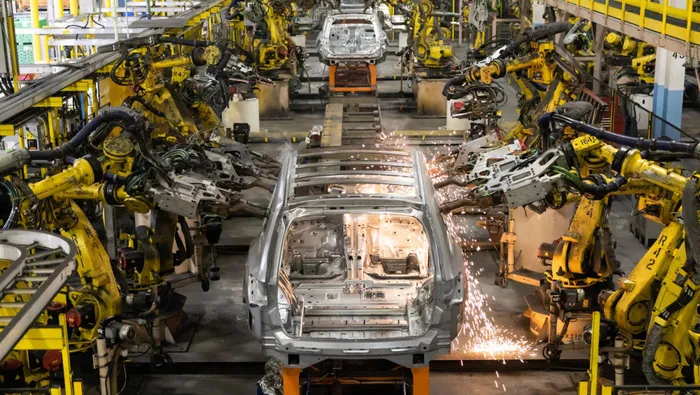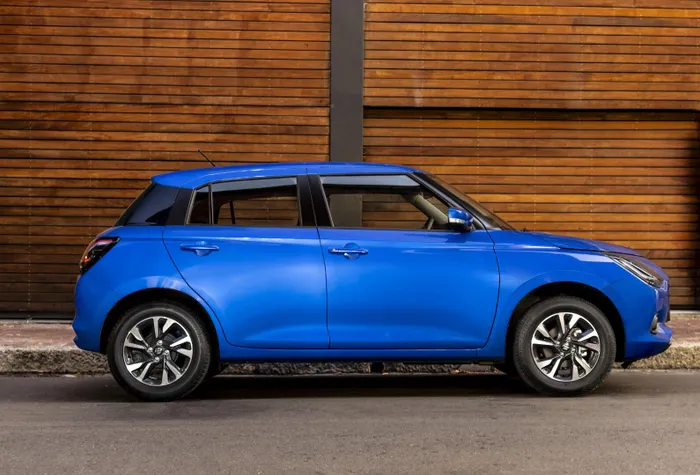Will Suzuki build cars in SA? Minister Tau engaging with carmakers as tariff debate rages

Just 37% of the vehicles sold in South Africa are locally produced.
Image: File picture / Stellantis
Donald Trump’s automotive tariffs, while only affecting the Mercedes-Benz operations in South Africa, have sparked conversations on whether the government is sufficiently protecting our market.
According to Lightstone, around 37% of the vehicles that South Africans purchase are locally produced, while a significant 36% are imported from India and 11% from China.
At a media event outlining South Africa's response to Donald Trump's tariffs, held in Pretoria on Tuesday, Minister of Trade and Industry, Parks Tau, revealed some interesting insights into the country's plan for the automotive industry.
Asked whether the government was considering raising the import tariffs on Indian and Chinese vehicles in order to prevent our market from being flooded, Tau did not rule out such a move but said the Department of Trade, Industry and Commerce (DTIC) was not in favour of punitive measures.
“With regards to Chinese and Indian auto, it is a discussion that we’re currently having with the intention of taking a less punitive approach, but rather taking a more proactive approach of getting some of those products manufactured in the country.”
Tau said many Chinese manufacturers had expressed interest in establishing themselves in the country and were making contributions towards a revised Automotive Production and Development Program (APDP), which is currently under review.
Tau said he could not comment on what the actual decision would be, regarding tariffs, but added that it was the government’s intention to accelerate the policy development process and related instruments in the implementation of the APDP.
Discussions with Suzuki Auto
Earlier this year Naamsa CEO Mikel Mabasa revealed that at least three Chinese car manufacturers were considering setting up vehicle production facilities in South Africa.
Interestingly, the DTIC has also been engaging with Suzuki Auto, which recently became the country’s second best-selling brand, thanks largely to an affordable product portfolio sourced almost entirely from its Maruti Suzuki division in India.
“I should say that we spoke about the Chinese, but in the next two weeks, we'll also be engaging with both Japan and India. You would know that Suzuki has a great presence in the country right now, and we will be visiting.
“So whilst it's a Japanese company, they're exporting from India to the South African market. So we'll be touching (base with) both the parent company and the company that's exporting into the South African market to see how we can cooperate and collaborate, on the basis of seeking to attract them as an investor into our country.
“So we're not holding the stick as a starting point. We start with the carrot and then balance it with the stick," Tau concluded.

Suzuki vehicles such as the Swift have surged in popularity.
Image: Supplied
After being approached for commentary on the Minister's remarks, Suzuki Auto SA told IOL:
“Suzuki Auto South Africa acknowledges the recent comment made by Minister Parks Tau during the media briefing. We are aware of Government’s intention to engage with Suzuki Motor Corporation in Japan and will continue to closely monitor any developments that may arise.”
It’s not just Suzuki that imports vehicles from India. Many of the smaller Toyotas, such as the Suzuki-built Starlet, Vitz, Rumion, and Urban Cruiser, are also sourced from there, as are other high-volume products from Korean brands, most notably the Hyundai Grand i10 and Kia Sonet. Tata is also set to re-enter the South African market later this month.
While Chinese imports accounted for just 11% of vehicle sales last year, this number is growing rapidly, and with a raft of new brands set to launch in the near future, including Lepas, iCaur, and the reintroduction of Geely, it would appear that our market is in real danger of being saturated. Consider that the country already has 16 Chinese brands, with Chery and GWM/Haval now fixtures in the top 10 sales list.
Can our market realistically accommodate so many brands?
Brandon Cohen, Chairperson of the National Automobile Dealer’s Association (NADA), commented that South Africa is a relatively small market that already has one of the largest offerings of brands and derivatives locally. This benefits the buyer as it provides fierce competition.
However, when it comes to the long-term sustainability of such a prolific brand count, Cohen feels the market will achieve a balance in the not-too-distant future.
“With consumers under extreme financial strain and new offerings that cater for high specification at competitive pricing, it is natural that those entities who cannot compete will suffer,” Cohen told IOL.
“I do, however, think that with certain brands remaining highly aspirational and product life cycles bringing new and exciting cars to market on a regular basis, we may see some brands recover while others could certainly fall away.”
Ultimately, their feasibility will depend on economic growth.
“Unfortunately, the market is only so big and is completely dependent on the growth of the economy and jobs. At present, we are still not selling the number of vehicles we were doing before COVID, and without growth, the share of sales will need to keep dividing amongst the brands on offer,” Cohen added.
“If we can get the economy to grow meaningfully, I think more brands will see a brighter future.”
IOL Motoring
Related Topics: